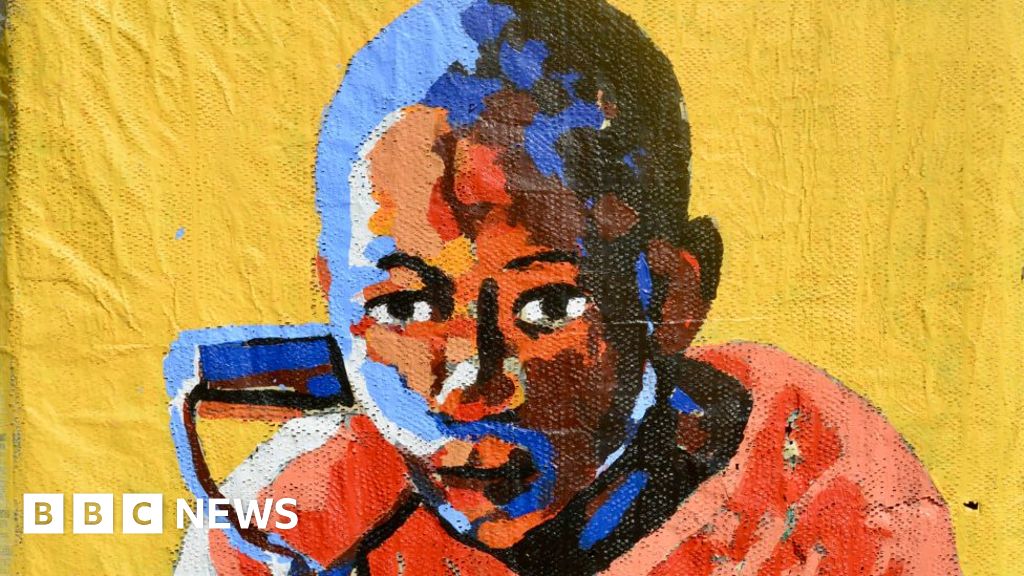Artist explores the toxic mining legacy of Zambia's 'black mountains'

Zambian Artist Exposes Toxic Legacy of Copper Mining Through Art
Lusaka - A Zambian artist is using his artwork to shed light on the devastating environmental and social impact of copper mining in the country's Copperbelt region. Stary Mwaba's latest exhibition at the Lusaka National Museum focuses on the lives of young men who scavenge for copper ore in the "black mountains" – vast heaps of mining waste that dominate the Copperbelt landscape.
The "Black Mountains": A Childhood Haunt Turned Toxic Workplace
Mwaba, who grew up in the Copperbelt, remembers the "black mountains" as forbidden territory. "As kids, we used to call it 'mu danger' – meaning 'in the danger'," he told the BBC. Despite the warnings, children would venture onto the slag heaps to pick wild fruits. Today, young men risk their lives in the same location, searching for copper fragments to sell, a stark symbol of economic desperation in a region plagued by high unemployment.
These informal miners, often working for gang masters known as "jerabos," dig deep and dangerous tunnels in the unstable waste rock. The work is tough, often illegal, and sometimes fatal. However, with youth unemployment hovering around 45%, it's often the only viable option for many to earn a living.
Art as a Voice for the Voiceless
Mwaba's artwork seeks to give voice to these marginalized communities. He uses old newspapers as a canvas, cutting out articles and burning holes through the "grand narratives" to create space for the "little narratives" of ordinary people. "I take these grand narratives, and I create holes so that you can't make sense of the stories any more. I then impose images of people I know on to them – to show that little stories, the little narratives of ordinary people also count," Mwaba explains. His brightly coloured portraits, often featuring fragile borders held together with tape, reflect the precarious existence of those living in the shadow of the toxic waste.
Portraits of Survival and Resilience
The exhibition features portraits like "Jerabo," depicting a miner preparing safety ropes before descending into a precarious tunnel, and "Shofolo," showcasing a young man embracing his shovel, a symbol of his livelihood. "Ipenga" captures the tuba player of a local church group, highlighting the importance of religion and community in Wusakile, while "Chimpelwa" shows two girls playing on swings made from discarded electrical cables, a poignant reminder of the environmental degradation surrounding them.
A Legacy of Mining and Environmental Degradation
Zambia has a long history of copper mining, dating back to the early 20th century. While the industry has contributed significantly to the country's economy, it has also left a legacy of environmental damage and social inequality. Millions of tonnes of mining waste, laden with toxic heavy metals, have accumulated over the years, posing serious health risks to local communities.
Earlier this year, a catastrophic spill from a Chinese-owned copper mine contaminated the water supply to Kitwe, affecting hundreds of thousands of residents and highlighting the urgent need for stricter environmental regulations and responsible mining practices.
Expert Analysis: A Call for Sustainable Solutions
Dr. Chongo Mwila, an environmental scientist at the University of Zambia, emphasizes the need for sustainable solutions to address the challenges posed by mining waste. "The 'black mountains' are not just an environmental hazard; they are a symptom of a deeper problem – a lack of proper waste management and environmental oversight," Dr. Mwila told the BBC. "We need to invest in technologies that can safely process this waste and extract valuable resources while minimizing the environmental impact. Furthermore, we must prioritize the health and well-being of the communities living near these sites."
According to mining analyst, Mr. Banda Sakala, the historical context is crucial. "The privatization of Zambia's mines in the late 1990s, while intended to boost efficiency, also led to significant job losses and a weakening of environmental regulations. This created a situation where informal mining became a survival strategy for many, but without the necessary safety measures or environmental safeguards."
From Science Project to Social Commentary
Mwaba's journey into using art as social commentary began almost accidentally. Inspired by his daughter's science project exploring mineral absorption in Chinese cabbages, he created a work that explored the growing influence of Chinese mining companies in Zambia. This marked a turning point in his career, leading him to focus on the stories of the people living in the shadow of the "black mountains."
Mwaba hopes his art will raise awareness about the challenges faced by these communities and inspire positive change. He believes that by giving voice to the "little narratives" of ordinary people, he can contribute to a more just and sustainable future for Zambia's Copperbelt.
Originally sourced from: BBC News Africa
